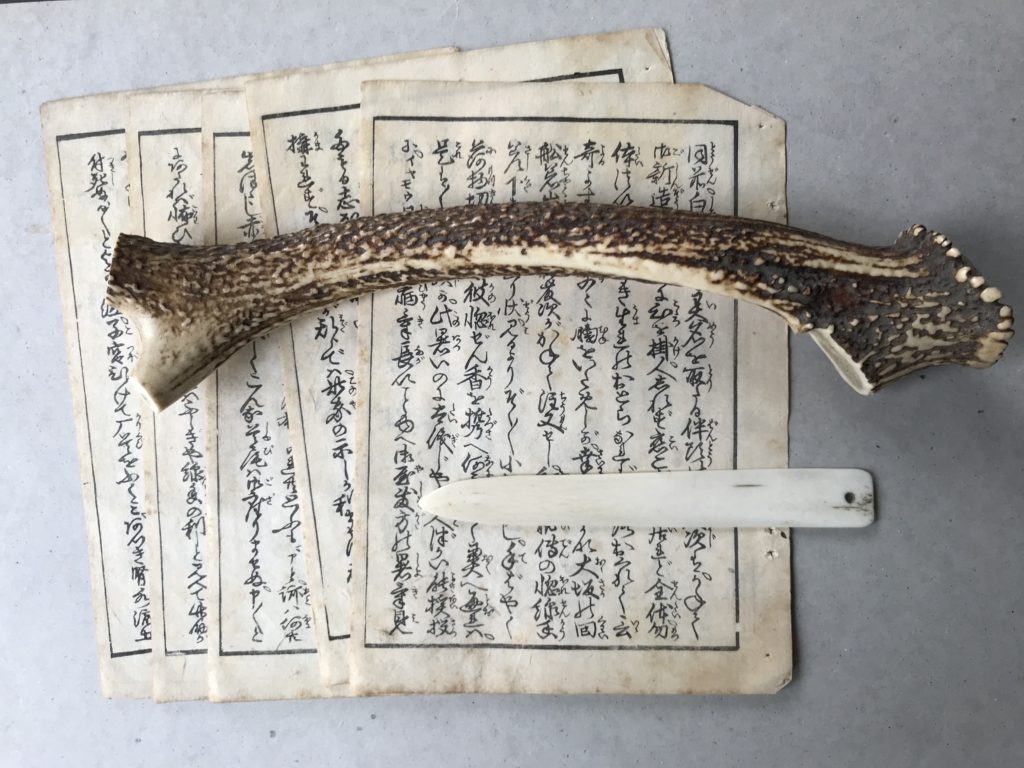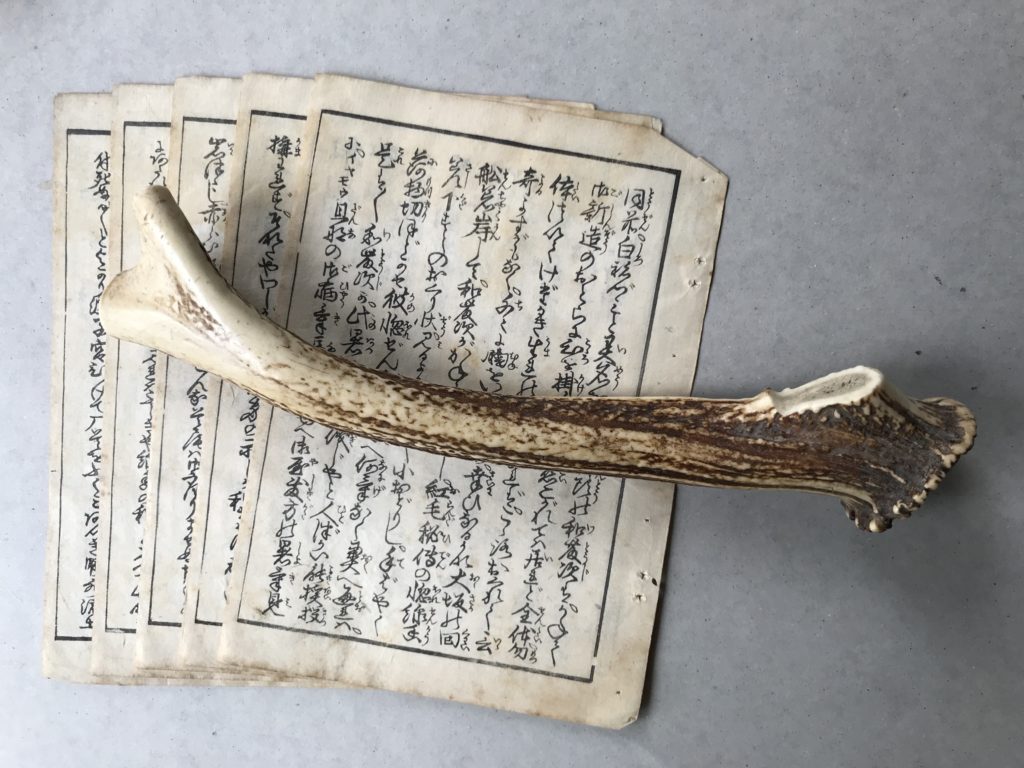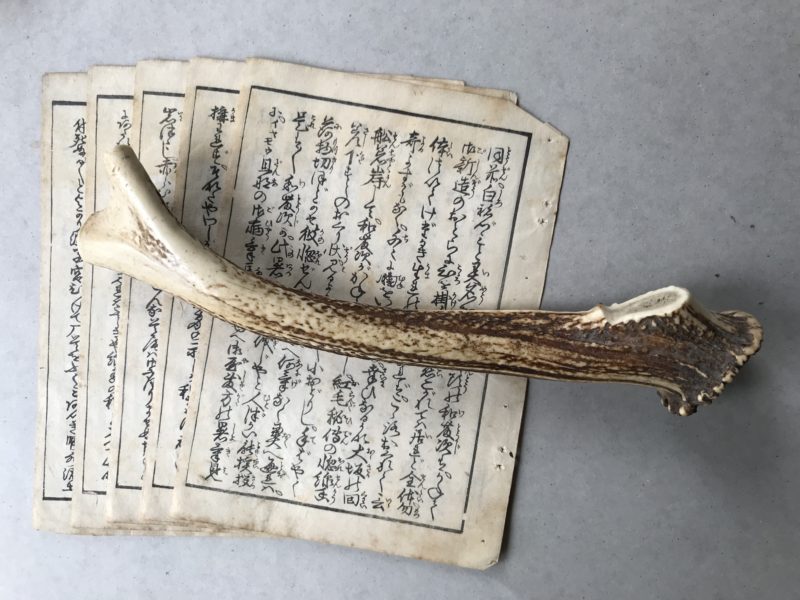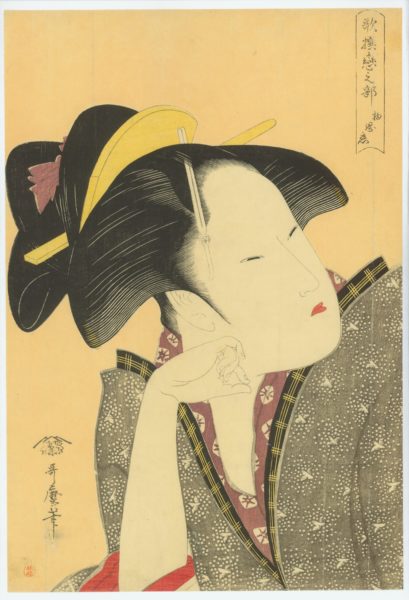Out of interest in the materials used in netsuke carving, I bought a piece of stag antler many years ago at one of these antique/curio markets that regularly take place in Japanese cities. It is actually probably the smaller of the two beams (unlike European deer, Japanese deer have two) that starts from the pedicle, the larger beam cut off, until its fork where it splits into two, and it measures 29 cm.
It has served me most as something good to have at hand on my desk to keep a book open at some page when I work on my computer. Moreover, it always feels very good in my hand with its very smooth surface. And so, years passed using the piece of antler regularly, without ever wondering why exactly it felt so nice.
When I finally sat down and pondered why, and held the piece of antler in my hands, my thumb quite naturally falling in place with one of those smooth areas, I realised that my grip corresponded with all smooth areas, except one. That was the end tip of the antler that was actually smoothest of all. And only then did it come to my mind: this is simply a very useful tool that is part of the book producing process of the Edo Period, a bone folder, probably what is called a hera in Japanese.


As the printed sheets of books – printed on one side only – came from the printer’s, they would be handed to a folders’ studio where a number of (mostly) women would make a living folding the printed sheets in half, text side out. These folded sheets would then be handed to the binders’ studio where they would be bound up to books in the then prevailing pouch binding or fukurotoji style.
From the Nihon shosetsu nenpyō, we know that some forty to sixty new titles of fiction alone came out each year in the 1790s. And from Kyokutei Bakin’s memories, Kinsei mono no hon, we know that these would often be issued in editions of 8,000 to 12,000 copies, sometimes even more when they were expected to be best-selling novels. No doubt, my bone folder has leaved through many more Edo period books than I myself. Maybe I should consider bequeathing it to the Edo-Tokyo Museum when I cannot use it myself to hold my books open anymore?

